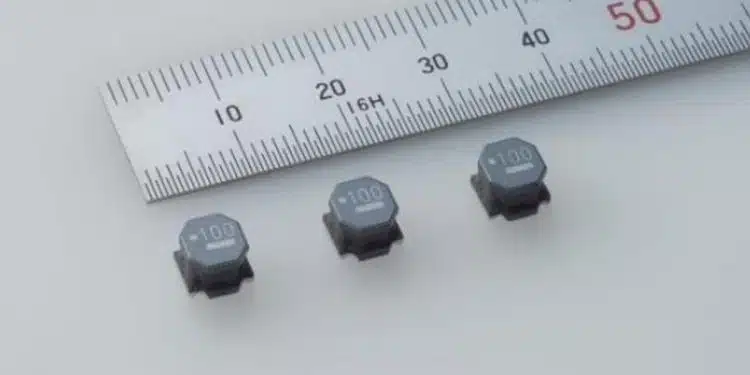TAIYO YUDEN CO., LTD. announced the launch of the AEC-Q200 qualified LAXH series of ferrite power inductors, and has begun the mass production of 16 items including the LAXHG6060YEL1R0NMR (6.0×6.0x4.5mm).
These products are designed for choke coils and noise filters for DC-DC converters, which are power supply circuits used in automobile engines, transmissions, and other powertrain components.
The LAXH series adopts a sleeveless structure with its advantageous compact size and high current capacity, and the upper limit of its operating temperature range has been raised to 150°C from that of our existing LCXH series (operating temperature range: -40°C to +125°C).
Furthermore, by applying our metal core material technology and using metal material for the outer resin, the series delivers a large current capacity at a DC saturation allowable current of 13.5A (inductance value 1.0μH), or twice that of our existing LAYP series “LAYPH06045DL1R0NGA” (6.3×6.0x4.5mm, inductance value 1.0μH, DC saturation allowable current: 6.7A) with an operating temperature limit of 150°C.
Production of the products commenced at our overseas subsidiary company, TAIYO YUDEN (PHILIPPINES), INC. (Lapulapu City, Cebu, the Philippines) in January 2023, with a sample price of 150 yen per unit.
Technology Background
Recently, new vehicles have been equipped with an ever-greater number of electronic control units, typified by ADAS units. This requires a greater number of power supply circuits, which boosts the demand for power inductors used inside them. In particular, ECUs are increasingly being installed in high-temperature engine compartments, and the electronic components installed must be able to handle high temperatures.
In response to these needs, TAIYO YUDEN has adopted a sleeveless structure with its advantageous compact size and high current capacity, and applied the metal materials technologies it has nurtured in its metal power inductors “MCOIL™” to commercialize this LAXH series which delivers an operating temperature limit of 150°C, and large current capacity at a DC saturation allowable current of 13.5A (inductance value 1.0μH). TAIYO YUDEN focuses on the development of products that meet market needs, and will continue to
expand its power inductor product lineup.
Applications
Designed for choke coils and noise filters for DC-DC converters, which are power supply circuits used in automobile engines, transmissions, and other powertrain components.































